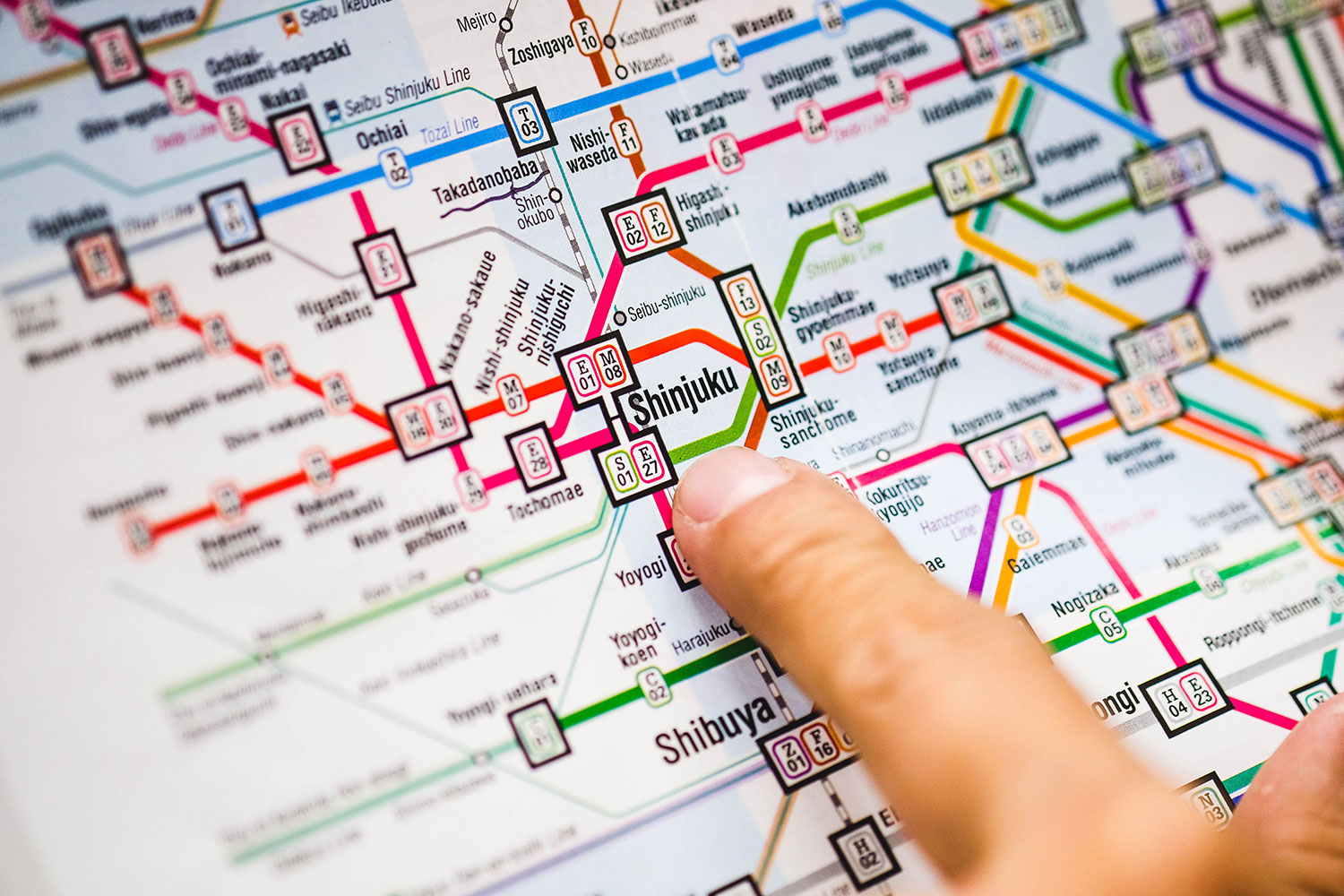

UNDERGROUND, BUS OR TRAIN – MUNICIPAL TRANSPORT IN TOKYO
Tokyo underground
The Tokyo municipal transport relies primarily on an extensive underground system. It permits reaching many different city zones quickly and efficiently. However, it may give a beginner user of its timetable a headache, especially with the number of miles covered by the underground network. The system has 13 lines of 194 miles in total. Besides, there are also lines that run partially above the ground and there are railway and agglomeration lines connected with the railway network. This gives a total of 558 miles. It is the most developed transportation network in the world, every day transporting about 8 million people. Curiously enough, this huge number of passengers has led to the emergence of a new occupation that involves “pushing” people into the train.
Tokyo underground pushers
Even though trains leave every 5 minutes, and during rush hours even every 2 minutes, the carriages are notoriously packed. So packed, that passengers are “pouring out” of them. This is where pushers come – to make underground railway a safe place and to help the train doors fully close. As the name suggests, their task is to push the crowd into the carriage. We must add that the passengers have nothing against this, pushers are respected and the whole pushing process is carried out professionally and in a peaceful atmosphere.
Tokyo underground – prices
Municipal transport in Tokyo is not the cheapest one. However, we have several options to choose from: single-fare tickets, daily tickets, tourist tickets or pre-paid Suica or PASMO cards. As far as the first option is concerned, the ticket price depends on the length of the route. The maps usually specify the fare for getting to your desired station. Expect to pay about 200-300 yens per ride.
The daily tickets Tokyo Free Kippu are about 1580 yens. They are more expensive but they also cover bus and railway rides.
Suica and PASMO cards can be bought at the airport but you will also find vending machines at underground stations. They are 2000 yens, plus 500 yens for card issuance. It is very convenient for travellers because they do not have to check particular fares all the time. All you need to do is touch it against the gate where tickets are validated and it will charge the right amount. If there is not enough money on the card, you will receive a relevant message. Also remember that you may use the card to pay in shops or for bus or railway rides.
The tourist ticket Japan Rail Pass is reserved for tourists only. You can buy it for your whole trip. It will be economically viable if you intend to use Tokyo transport a lot.
You can get all Tokyo underground tickets except for the tourist ticket at every station. The tourist ticket can be bought outside Tokyo in any travel agency and activated in the city.
Tokyo buses
If you touch down at the Narita International Airport and you want to get to the Tokyo Bus Station, you can reach it by train or by bus. Choose the latter if your luggage is not too big or too heavy. This way you will get to see some of the city. Besides, using the underground may initially seem a little complicated – on the bus you can always ask the driver for directions. Please also note that you usually get on the bus through the front door and disembark through the middle or the back door. On some buses it is the other way round – depending where the ticket vending machine is situated. When in doubt, look at the queuing Japanese – they will show you where to enter.
Tokyo railway
Tokyo railway is still among the fastest and the most comfortable means of transport in the world. The Japanese have taken care about every detail to make the journey as pleasant for the passengers as possible. The average speed is 177 miles per hour, and the recorded delays are counted in seconds. To help you visualise how fast you can travel, we will present an example of the Shinkansen line from Tokyo to Kyoto. This 310-mile journey takes just 2 hours and 15 minutes. In Poland this would be at least 3 to 4 times as long.
Tokyo trains are clean and comfortable. They also offer privacy. This is why seats face the direction of travel so that the passengers do not have to face each other. Still, if they wish to, they may turn the seats, which is a popular solution among families and friends. Despite this option, passengers do not talk to each other or on the phone without a good reason. Everyone respects their own and one another’s privacy so the journey is peaceful and quiet.














